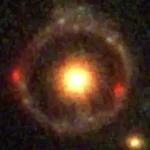Key Takeaways:
- Recent measurements suggest that the warp at the edge of the Milky Way may be nearly stationary, challenging previous findings.
- This revelation sparks a heated debate in the scientific community, impacting our understanding of spiral galaxy structures across the universe.
- The traditional image of the Milky Way as a flat, double-armed spiral galaxy is now being reevaluated due to the enigmatic warp phenomenon.
- Initial observations in the radio spectrum unveiled the warped borders, resembling a vinyl record affected by heat.
- Theories about the warp’s origin range from slow-moving material falling onto the galactic disk to dynamic interactions with dark matter and gravitational effects from smaller galaxies.
In a surprising turn of events, recent measurements of the Milky Way’s galactic warp have thrown the scientific community into a whirlwind of debate. These new findings challenge prior reports, indicating that this peculiar distortion on the outer rim of our galaxy might be nearly motionless. This revelation is not a mere academic disagreement; it holds the potential to reshape our fundamental understanding of spiral galaxies’ formation and structure throughout the cosmos.
While the Milky Way is often envisioned as a flat, double-armed spiral galaxy adorned with twinkling stars, astronomers have recognized since the mid-20th century that this portrayal is only partially accurate. The radio spectrum observations initially exposed the warped boundaries, with some regions curving upward while others droop down, akin to a vinyl record’s response to heat. Žofia Chrobáková, an astrophysics doctoral candidate at the Institute of Astrophysics of the Canary Islands in Spain, highlighted that this phenomenon, known as a galactic warp, is not exclusive to our galaxy but is common in spiral galaxies.
Various theories have been posited to explain the warp’s formation. Some suggest that it arises from sluggish material settling onto the galactic disk, implying a static or extremely slow movement. In contrast, more dynamic mechanisms propose interactions with dark matter and gravitational influences from smaller galaxies, generating ripples and resulting in an active warp that could be rotating like a spinning top, a phenomenon known as precession.
A groundbreaking study published in the journal Nature Astronomy last year, utilizing data from the European Space Agency’s Gaia satellite, asserted that the Milky Way’s warp was indeed in motion. A subsequent paper in The Astrophysical Journal further supported this claim, suggesting a relatively rapid orbit with a period ranging from 600 million to 700 million years. If substantiated, this would be almost ten times faster than previous models projected.
However, a recent study by Žofia Chrobáková and her co-author Martín López-Corredoira challenges these earlier conclusions. By reevaluating the same Gaia data with a different approach, they contend that the warp is moving approximately 3.4 times more sluggishly than previously reported. They humorously refer to this as an “anti-discovery,” indicating a regression to square one in understanding this cosmic enigma.
Nonetheless, the considerable margin of error in Chrobáková’s measurements leaves this matter far from settled. Ronald Drimmel, an astronomer at the University of Turin in Italy, who was involved in the initial measurement of a precessing warp, noted that this uncertainty could imply either negligible motion or a significant one.
Much of the discrepancy stems from the exact shape of the warp itself, a detail that neither research team has firmly grasped. Drimmel emphasized the complexity of such measurements, given our position within the galaxy’s disk, with dust clouds limiting our visibility.
Chrobáková concurred that additional data will be imperative to resolve this scientific puzzle. The forthcoming release of a new catalog by Gaia next year holds promise for shedding further light on this cosmic conundrum. This development is critical as exploring other galaxies in such intricate detail is often unattainable due to their immense distances. The Milky Way thus presents a unique opportunity for delving into this captivating celestial mystery.


